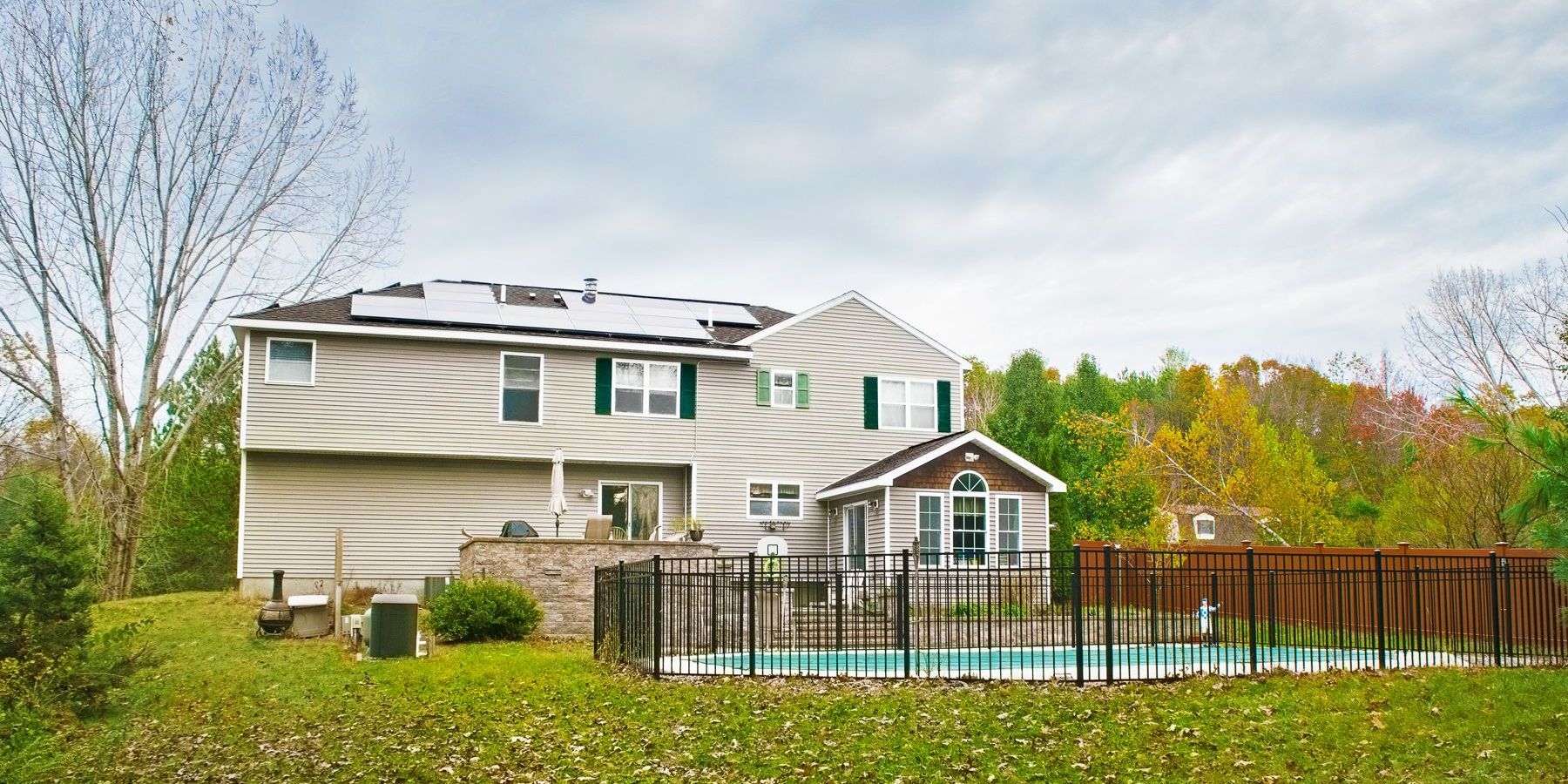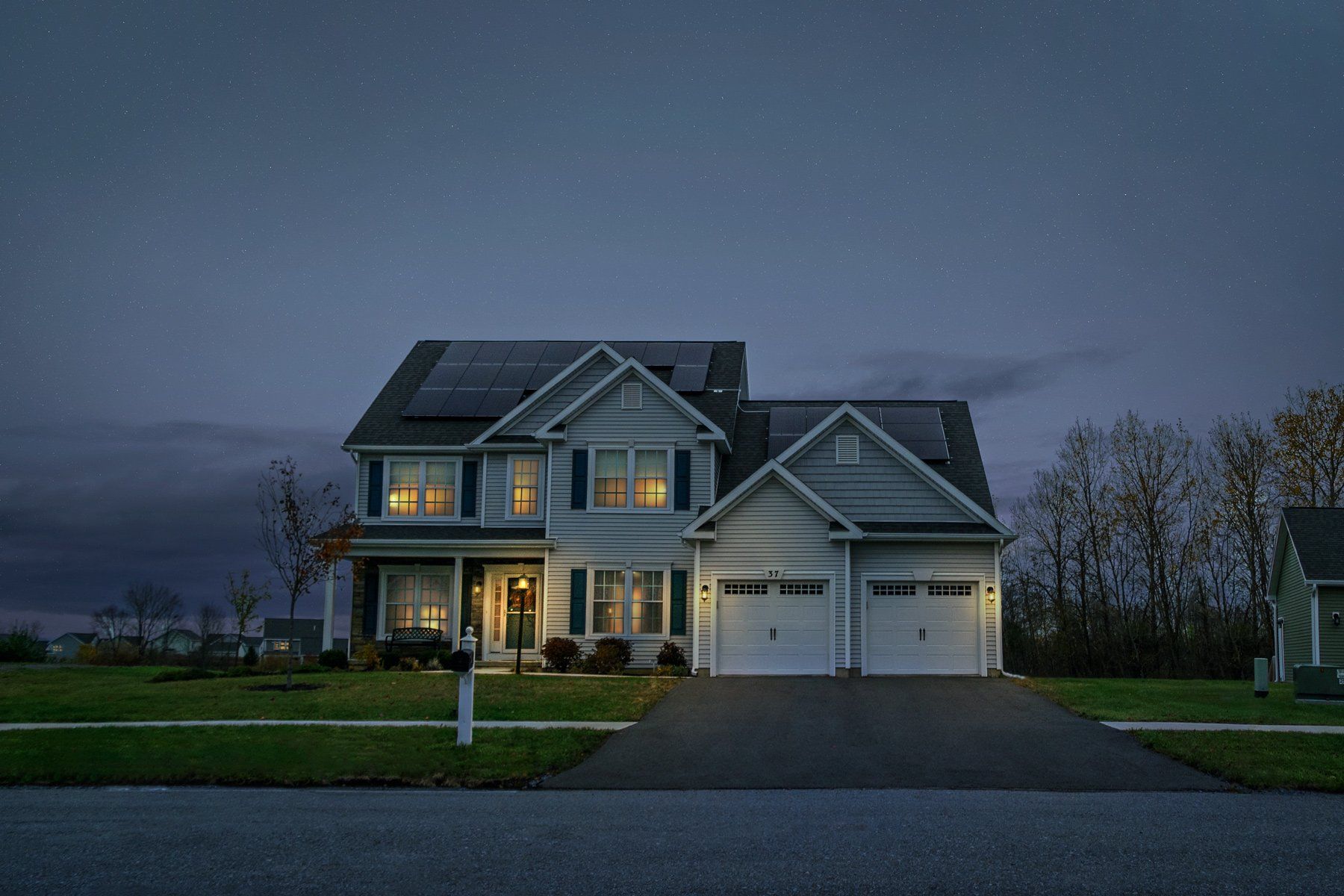Building A New House With Solar
If you are building a new home, or considering building a new home, a great thing to incorporate into the design is a rooftop solar system. Not only will you save money from day one on your utility bills but it can also cut the cost of your solar system. Since you can design your roof to be optimized for solar, you may need less panels to offset the power of your home. Also, you can cut down on the costs of the electrical conduit needed for solar by making it easier to access. Building a new house with solar is a perfect way to save money from day one and ensure that your home is optimally set up for it.
Roof Aspects to Keep in Mind
Roof Orientation –
The roof plane which you want to have your solar panels on should be facing true south. Since we get less sun in the Northeast this allows the panels to get the optimal amount of sun. The closer the direction of the roof is to 180 degrees south the better the solar system will perform.
Steepness –
The ideal angle for your roof is between 30 and 45 degrees. This allows the panels to be at the best angle to absorb the power from the sun.
Vents, Chimneys, & Dormers –
You want to avoid having any vents, chimneys, or dormers on the roof plane that your solar panels will be on. Any of these elements can cause shading on the panels.
Roof Material –
The best roof materials for a solar system are asphalt shingles or metal. This is due to their durability and long lifespan. Slate tiles and cedar shingles are more fragile and can cost more money to install on. This is why most solar installers will only install on asphalt shingle and metal roofs.
Load Bearing –
On average, solar panels add an additional 3 pounds per square foot. During the construction process you can check with your contractor to make sure that your roof will be able to easily withstand the extra weight.
Shading –
While we love beautiful trees in our yards, we prefer for them to be in a spot that won’t cast any shadows on the solar panels. Therefore, it’s best to plant any trees or shrubbery with your solar panels in mind.
Electrical Aspects to Keep in Mind
Electrical Conduit –
Electrical conduit is usually run on the outside of a home for a solar system. However, if you incorporate where it needs to be run during construction you can have it run on the inside of your home if you prefer. Having your home prepared for this can make it easier on the solar installers and shorten the amount of time the installation will take.
Main Service Panel & Circuit Breakers –
During the construction process you can ensure that your main service panel and circuit breakers will be in an easily accessible location and that they can handle the addition of a solar system.
PV Inverters & Other Equipment –
Some of the equipment for your solar system will need to be near the main service panel. You can set aside room near the main service panel for easy access and to install the additional solar equipment such as the inverter.
Building a new house with solar can also increase the value of your new home. Therefore, your new home has already gone up in value with the addition of your solar panels. If you are interested in how solar panels increase the value of your home you can read more about it here.
At any point during your construction process we would be happy to talk with you and your contractor about how to incorporate a solar system. You can reach out to us here today!
Content is in reference to an article that originally appeared on energysage.

As electric vehicles become more popular, the demand for EV chargers is growing fast. Every day, more EVs hit the road, and businesses are starting to take notice. Installing EV chargers at your location is a smart move—not just to keep up with the rise of electric cars, but also to show that you’re forward thinking and environmentally friendly. We've put together a list of the many benefits to installing EV chargers!

Utility costs are on the rise and there’s no sign of them slowing down. Consumers are feeling the pressure of constantly climbing electricity rates. As inflation continues to affect nearly every industry and energy demand increases, utility companies are charging more, which means your bills are getting higher. In fact, many experts agree that utility prices will only continue to increase, making it harder for households and businesses to keep their budgets under control. NYSERDA provides detailed information on historical energy rates throughout New York State for example. These patterns follow the same trends nationwide.

